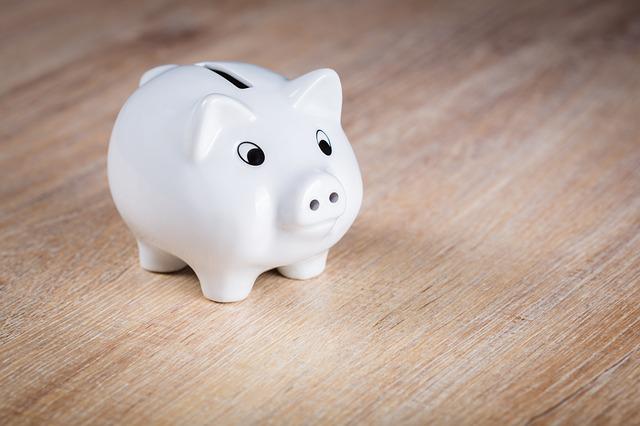
Why Are Piggy Banks So Wise: Top Reasons
To start with, why are piggy banks so wise?
There are three main causes. Piggy bank invites you to leave some small coins, invites the child to become responsible and autonomous, and is a decorative figurine with a double purpose that brings back objectives.
To learn why piggy banks are so wise, please continue reading.
Table of Contents
Why Are Piggy Banks So Wise?
Requests A Donation Of Some Pennies
The piggy bank is actually used, for instance, in the restaurant industry to ask patrons for tips.
In Asian shops, the maneki-neko piggy bank is a lucky cat with a Japanese design that asks customers to leave a small donation as a way of saying thanks to the shopkeeper for his assistance and the enjoyable and special moment he provided. It helps businesses increase engagement and their relationship with customers.
Nevertheless, use caution; just because you don’t own a company doesn’t preclude you from using a piggy bank for your own gain. For instance, by placing it on your desk at work, you can indirectly invite your coworkers to buy you coffee by asking them to put some yellow coins in your piggy bank. This is a hilarious and creative way to start funny incidents that would never have happened! Consider having a coworker fill your piggy bank each day with the cost of your coffee without you knowing who it is! The discovery of this will brighten your day. You might find your true love here.
If you work as a therapist, you might be able to offer this as a way for your patients to tip you subtly for a job well done. And, as they say, “You don’t ask for anything, you get nothing!”
Develop Independence & Responsibility
Giving your child his first piggy bank often coincides with the establishment of pocket money and a contract that governs it by committing the child and the parents.
These behaviors convey to your child that you believe in him and recognize his maturation. Then he will start to think rationally about his financial situation. He will make mistakes and undoubtedly want more money, but he must first and foremost accept that the value of money comes from its scarcity. You can teach your child the value of saving by using a piggy bank and stressing the idea that what is spent now might be missed later.
The development of financially responsible, budget-savvy individuals depends on this process. Teaching children to be independent and frugal is a good idea at any age.
Serves Two Purposes & Refers To Goals
Beautiful piggy banks are frequently mistaken for uncomplicated ornaments like statuettes or figurines. This makes it possible for everyone to see it. What is concealed from view is the best place to hide, after all!
In addition to its primary purpose of helping you save money, it’s important to choose a piggy bank with a shape that will remind you why you’re saving every time you see it.
You may choose a Van Piggy Bank if you are planning a RoadTrip, or if you choose to visit the Reunion Island, a Pineapple Piggy Bank.
Here is your best business plan for traveling piggy banks if your goal is to save money to pay for your tickets and other expenses because you are cursed.
If the goal of this piggy bank is to break this bad habit, it would also be appropriate to make the family deposit a small coin each time someone uses a foul word.
However, you can have much more creative goals. We are confident that you will find a creative piggy bank that suits you in our shop.

Where Did Piggy Banks Come From?
Did you know that the concept of saving money is an old one? It is, in fact, as old as the world. People always carried coins with them when metal money first appeared 700 years before the year JC. Therefore, it was customary to keep a few coins on hand for emergencies.
However, the concept of saving in a container was first developed by the Greeks. At that time, the Greeks created miniature temples out of ceramic to house their coin collection. They developed preservation models over time in a variety of shapes, including those of animals. The hard to open piggy banks of today are not yet represented in these images. At that time, piggy banks were made from clay and named Thesaurus.
The boxes were simple to open and close during this time, which made it challenging for many people to save money. The Romans came up with the concept of non-opening boxes primarily as a solution to this minor issue. They wanted to build a crate so that the only way to get the pieces was to smash it. So, the Romans became the earliest ancestors of modern piggy bank designs.
Why Is It Referred To As A Piggy Bank?
The piggy bank had its golden age only during the 18th century. Many things changed during this period of revolution. In fact, during this time, it was now possible to master iron, decorate metal, alter wood, and even transform ivory. All these developments have made it possible to update the piggy bank so that many people can select the design that best suits them. If the earlier models were only intended for people of lower social classes, the current models are appropriate for all social classes.
Due to the designers’ overflowing imagination, the shapes simultaneously exploded. Thus, there were models that were square, cylindrical, or in the form of animals… It was at this time that the piggy bank in the shape of pink pig made its first appearance and immediately became a great success. It continues to be the most produced and cherished model on the market today.
On the island of Java, in the 12th century, the first pig-shaped money containers were discovered. Literally “likeness of a wild boar”, but used to mean both “savings” and “piggy bank”) is also in the modern Indonesian language. A large number of boar-shaped piggy banks were discovered at the large archaeological site surrounding Trowulan, a village in the Indonesian province of East Java and possible site of the capital of the Majapahit Empire.
There are a number of folk etymologies regarding the phrase “piggy bank” is an expression in the English language, but it is only recent—dating from the 1940s—and its origin is obscure. Pigs were revered as lucky symbols in Germany, which is where the Western piggy banks are thought to have first gained popularity.
The oldest German piggy bank dates to the 13th century and was recovered during construction work in Thuringia. The earliest known use of “pig bank” in English is the 1903 book An American Girl in Mexico, which describes them as a Mexican souvenir.In Mexico, piggy banks are called alcancía, a term originating from Andalusian Arabic.
A Piggy Bank Can Hold How Many Coins?
If you know what to look for and how to do it, saving money online is simple.
Take a moment to consider all the annoying red coins you daily leave in your car, forget in your grocery bag, orsimply leave at the bottom of your bag. True, they are small, unimportant, and boring, but hold on a second.
10 of those little one dollar coins in your hand, you get 10$. You will have $300 in your jacket pocket if you play this game every day for a full month. In the present, 3600 dollars ($300 x 12 months) equals one year. A return trip to Thailand, a Full HD TV, and a weekend in Madrid. In other words, you could make a nice gift for yourself at the end of the year without doing anything particularly noteworthy. Just for being sensible and clever, like, for example, buying a Piggy Bank first.
How much money I have already put in my piggy bank or how much more I can put in my piggy bank is one of the concerns that new investors have.
You don’t have to worry about that anymore, there is an Electronic Piggy Bank on our site that does all the work for you.
All of your spare change needs to be carefully placed in the piggy bank, and it will do the rest.
Ceramic or porcelain are frequently used to make piggie banks. They are generally painted and serve as a pedagogical device to teach the rudiments of thrift and savings to children; money can be easily inserted. Many piggy banks have a rubber plug on the underside, while others are vinyl and have a detachable nose for coin access. Some incorporate electronic systems which calculate the amount of money deposited.
Some piggy banks only have a slot for coins to be inserted; therefore, to get at the money inside, one must smash the piggy bank with a hammer or use another method.
Read about: Why Are Boys Mean To Girls?
Open A Piggy Bank Made Of Ceramic Without Breaking It
It is no longer necessary to disassemble your piggy bank into a million pieces in order to get at the contents, as was the case with the first piggy banks that didn’t have a plastic cap when they were invented. You can have fun putting it back together if you break it into a few sizable pieces by using an instant glue specifically made to bind ceramic and porcelain. You’ll avoid having to buy a new piggy bank thanks to this.
Such a lovely product shouldn’t be wasted, in my opinion.
To open a ceramic piggy bank without breaking it, however, is actually possible.
- Remove the accumulated money from the slot
Ok this method is time consuming, but if your piggy bank does not have a plastic cap, you can sacrifice time instead of sacrificing your piggy bank.
We’ll need a basic model knife, a butter knife, or a thin, simple ruler to do this. There is a place for money storage in piggie banks. The width of this slot exceeds the thickness of the thickest piece by at least 1.5 times. You’ve saved money, and we’ll use that to get it.
Simply slide the blade of the knife into the opening, tilt the piggy bank, and shake it to collect the little coins. One coin will unavoidably rest on the blade as the coins drop out. We simply need to repeat the process by removing the knife from the coin-hole.
Even though work is tedious and time-consuming, it is still worthwhile if you need to keep your piggy bank intact. Additionally, you are not concerned with how to open a piggy bank without breaking it in this situation.
- To open a Ceramic Money Box with a silicon cap
To open your piggy bank quickly and easily, all you will need is a knife to cut through the silicone.
Conclusion
The article’s main point was the wisdom of piggy banks.
Owning a piggy bank at home also promotes family discussion of finances and shopping habits. Every day, it serves as a reminder to kids and parents of the learning objectives and offers assistance in the ongoing study of money.
Each participating primary school receives enough “school piggy banks” to provide one for each student in each class. It goes without saying that this is expensive, just as it does to purchase school supplies and related instructional materials. The project must rely on so-called school sponsors to pay for it. Stephanie Schmid and Diana Bartl connect potential donors with interested primary schools. Additionally, they plan the parent information evening and the teachers’ workshop, as well as coordinate all deadlines, including those for the delivery of teaching materials and the piggy banks.
I appreciate you reading. Please see our most recent posts for more information about why piggy banks are such wise investments. Have a nice day!


